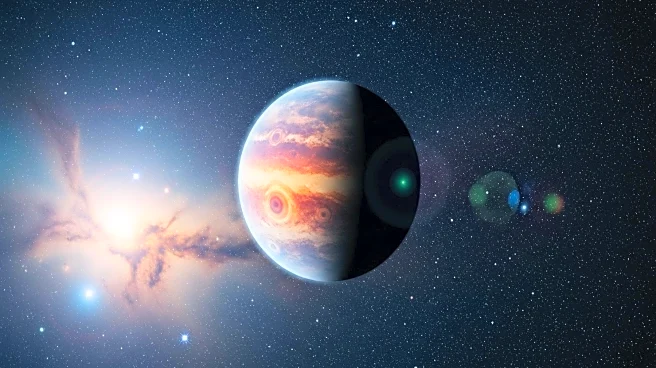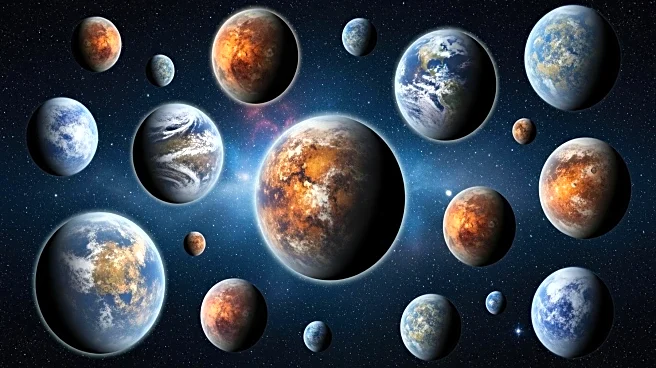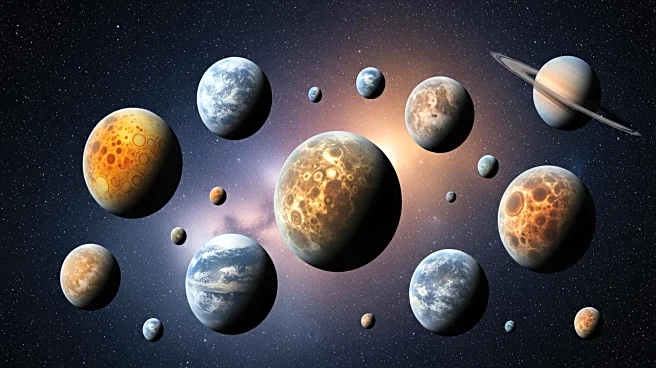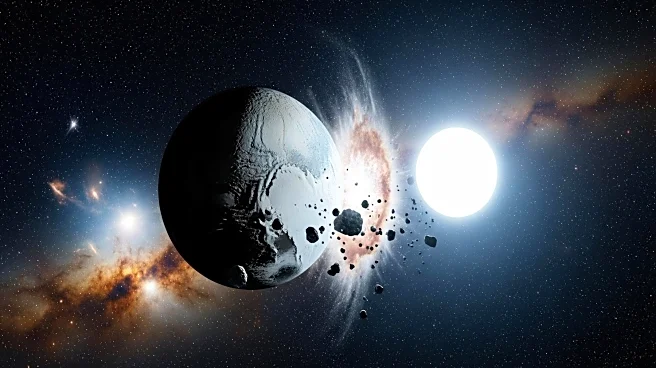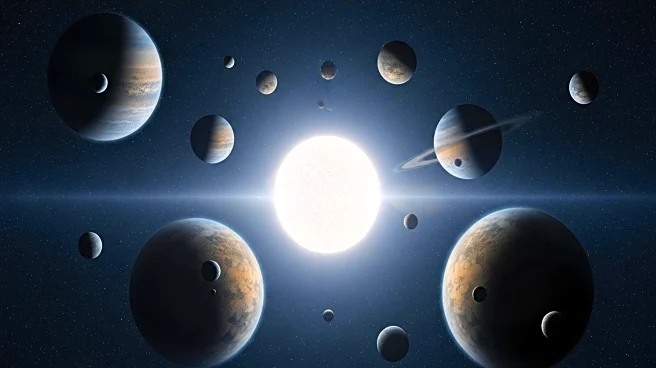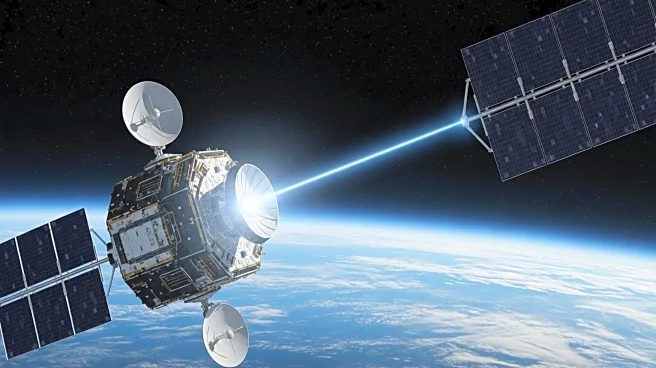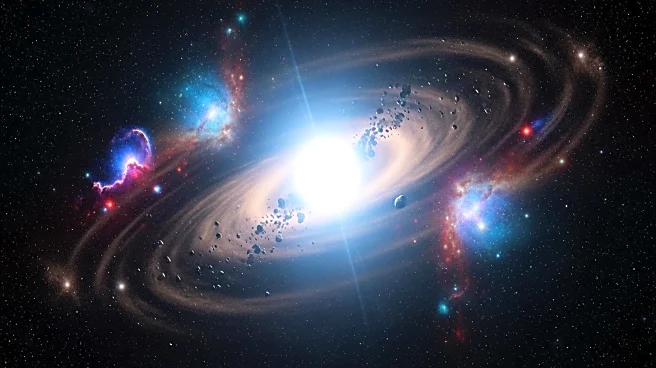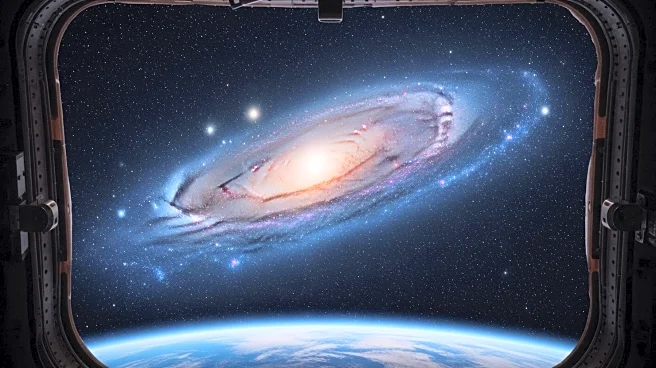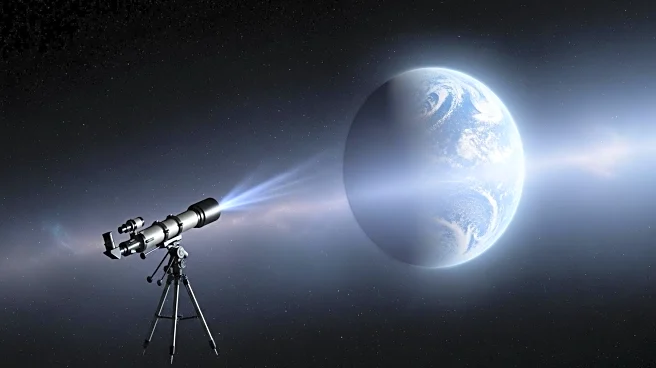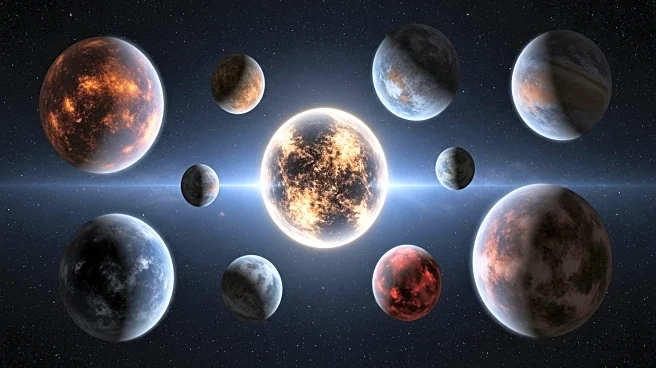What's Happening?
NASA has officially confirmed the existence of 6,000 exoplanets, marking a significant milestone in the search for planets outside our solar system. This achievement is the result of decades of exploration using NASA's space telescopes, which have transformed humanity's understanding of the night sky. The Exoplanet Science Institute at Caltech's IPAC in Pasadena, California, monitors the count, with over 8,000 additional candidate planets awaiting confirmation. The discovery of these exoplanets has revealed a wide variety of planetary types, including Jupiter-sized planets orbiting closer to their stars than Mercury does to the Sun, planets orbiting multiple stars, and planets with unique characteristics such as lava surfaces or gemstone clouds. This milestone comes 30 years after the first exoplanet was discovered around a star similar to our Sun.
Why It's Important?
The confirmation of 6,000 exoplanets underscores NASA's leadership in the search for life beyond Earth. This milestone is crucial for understanding the diversity of planetary systems and the conditions under which planets can form. The discovery of various types of exoplanets provides insights into the potential for finding Earth-like planets and assessing the likelihood of life elsewhere in the universe. As NASA continues to explore these worlds, the upcoming Nancy Grace Roman Space Telescope and Habitable Worlds Observatory are expected to further advance the study of planets similar to Earth, potentially leading to groundbreaking discoveries about the universe and our place within it.
What's Next?
NASA plans to focus on finding rocky planets similar to Earth and studying their atmospheres for biosignatures, which could indicate the presence of life. The James Webb Space Telescope has already begun analyzing exoplanet atmospheres, but new technology is needed to block the glare from stars to study Earth-like planets effectively. The Roman telescope will test new technologies for blocking starlight, and NASA is developing the Habitable Worlds Observatory to detect Earth-like planets. These initiatives aim to reveal new details about planetary systems and the prevalence of solar systems like our own across the galaxy.

